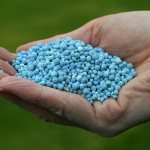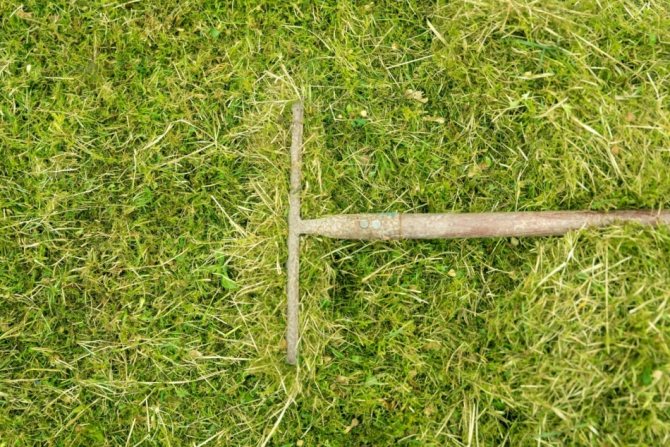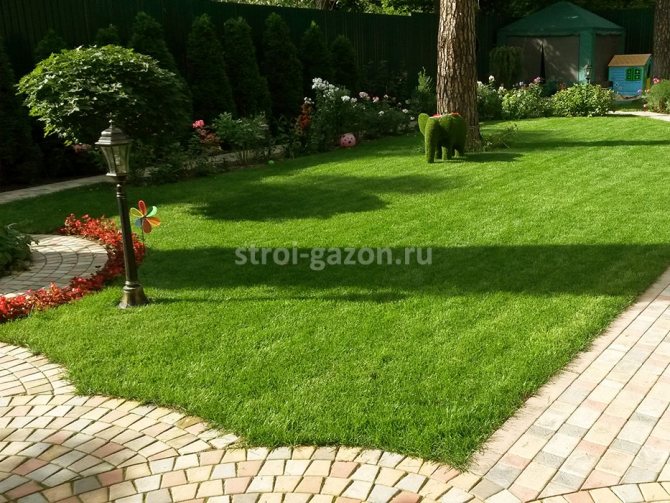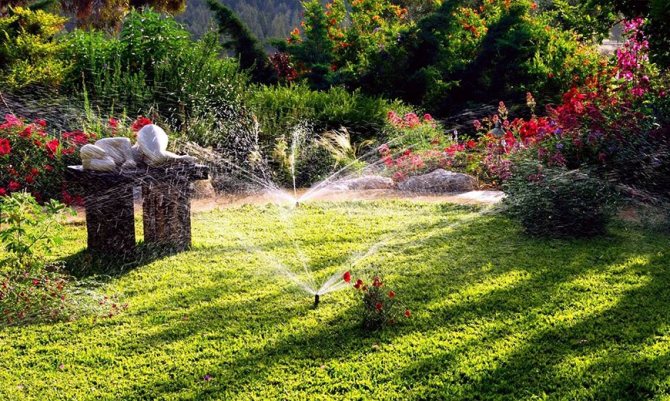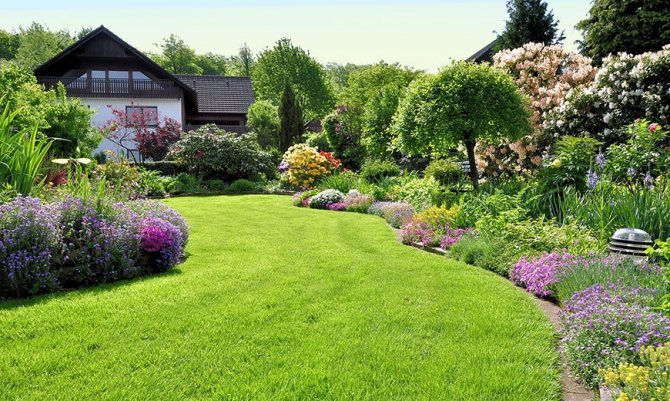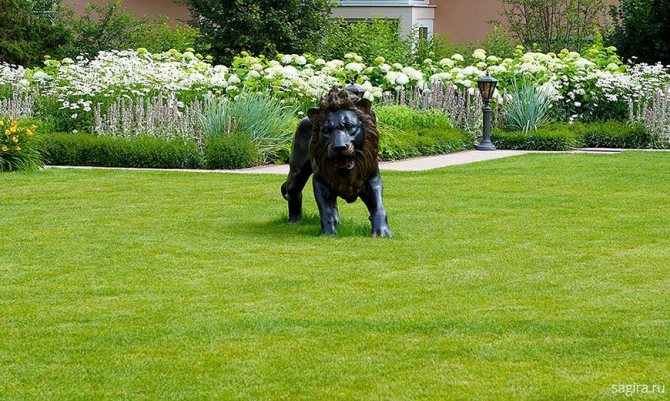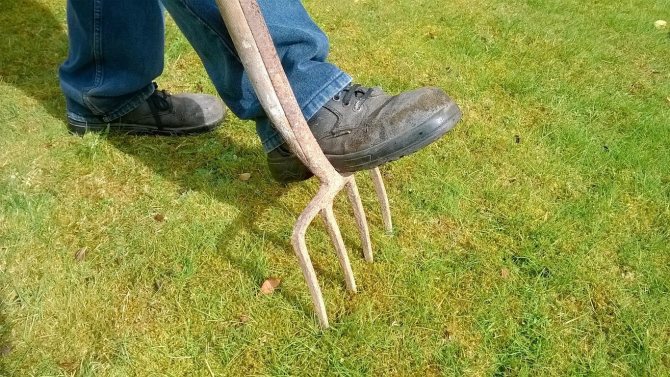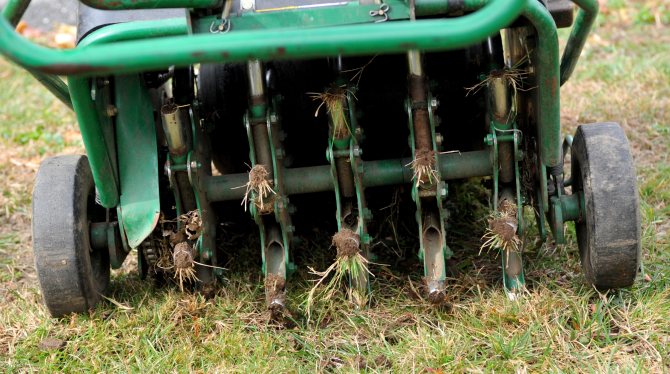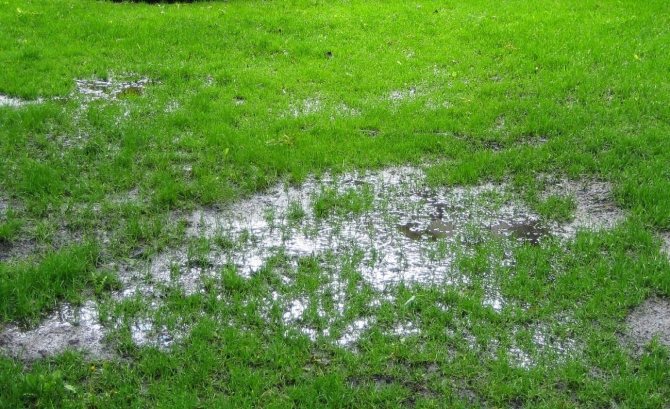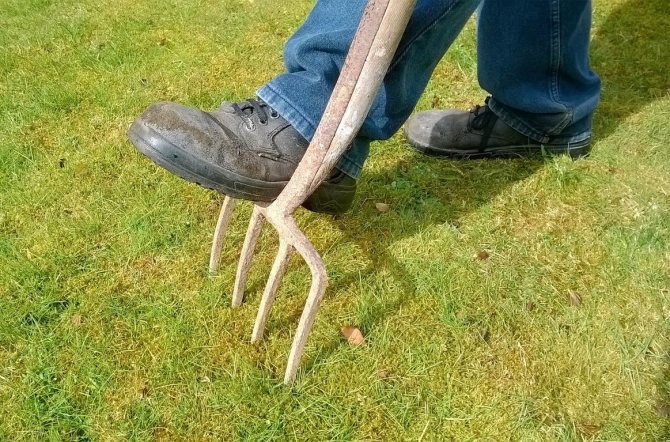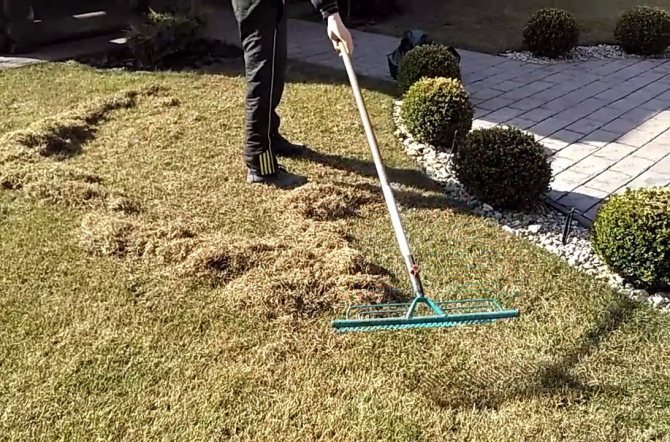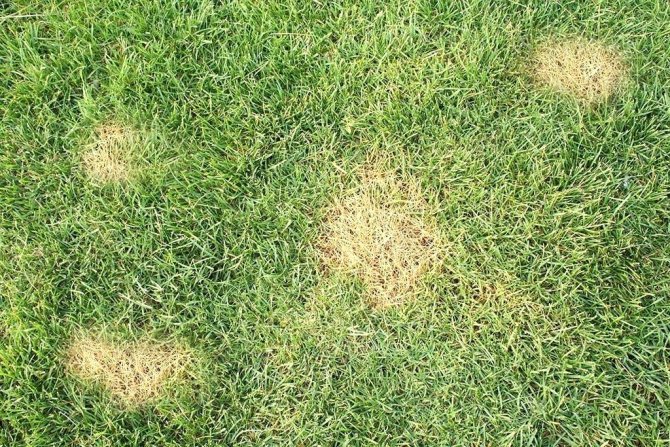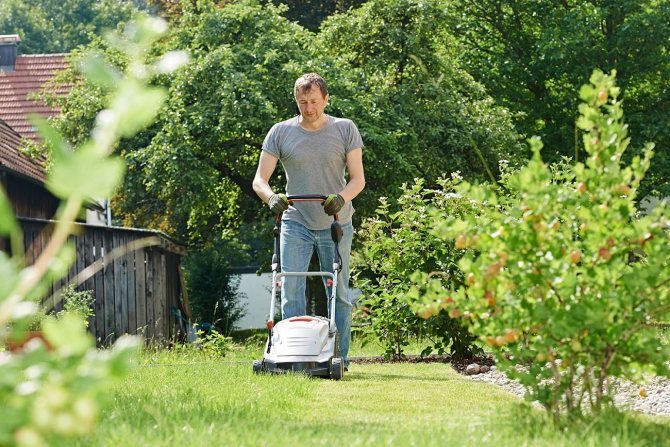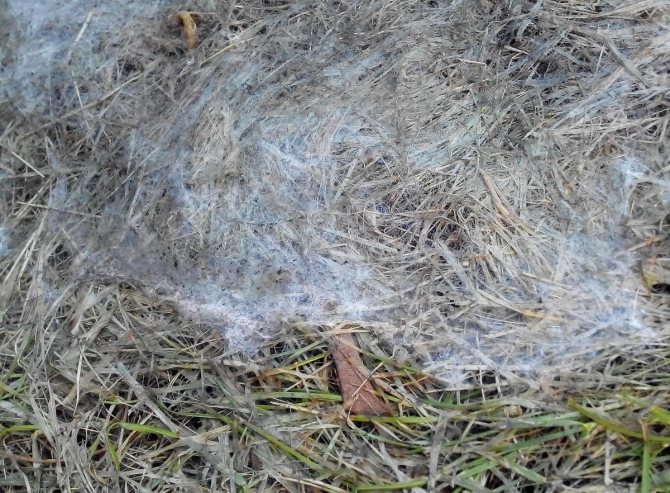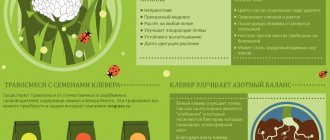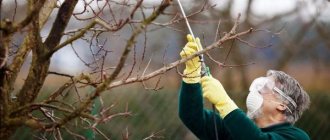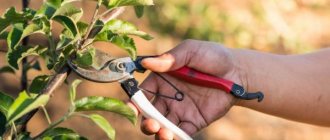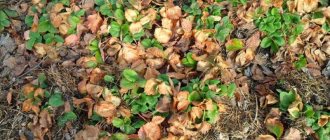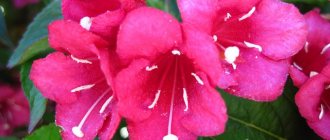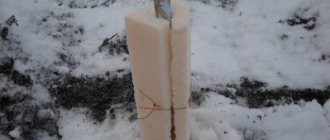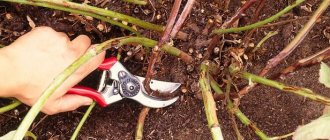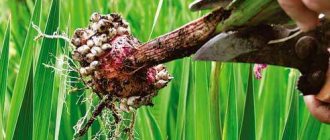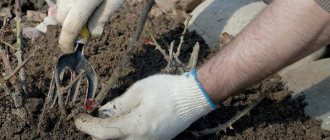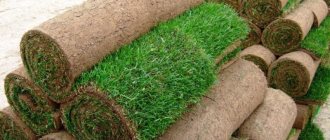The lawn, as in the picture, is quite real. This does not require too much investment and deep knowledge. It is enough just to regularly perform simple procedures for the care of the rolled lawn after laying.
If you do not have enough time for this, LENOTR-PARK specialists will perform the whole range of garden maintenance work, including mowing and feeding the lawn. You can find out about the cost of these works by calling us or write to the mail, you can also fill out this form.
How to get rid of moss on your lawn?
Of course, the moss on the lawn can be removed manually, but not for long. You can buy moss remover (contains ferrous sulfate) in almost every horticultural center. If you don't improve the condition of the lawn with it, the problem will quickly return. Moss grows best in shady areas, in moist and compact soil. Roots that are not treated with the preparation lead to the formation of new moss.
To get rid of the problem permanently, you need to thoroughly remove the moss to ventilate the turf and improve its structure. It is also advisable to use liming, since moss often grows on too acidic soils, and lime will raise too low a pH of the soil substrate. In early spring, fertilize the soil with dolomite fertilizers to strengthen the grass and prevent moss growth.
The high content of iron in the composition of fertilizers eliminates the formation of moss on the lawn. To solve the problem in the complex, you can use fertilizer "For lawns" (FLOROVIT, Poland), the packaging is different, from 1 kg to 25 kg. For my site, I ordered a 10 kg bag last year. In 2020, the appearance of moss on the lawn was not observed.

Aeration
This event is carried out with the aim of improving the structure of the soil, providing air flow, saturating the soil with oxygen. The caked soil cannot provide the proper penetration of moisture and nutrients to the roots of plants, which leads to the appearance of bald spots, thickets of mosses, and also the growth of green mass stops and the overall growth rate of plants decreases. In this state, the green coating is less resistant to diseases, it is difficult to tolerate the cold season and stagnant moisture.
The main objectives of the event:
- reduce soil density;
- give air flow to plant roots;
- ensure proper penetration of moisture during the dry season;
- rid the soil of excess moisture and stagnant water, which lead to decay processes;
- improve the flow of mineral fertilizers into the lower soil layers.
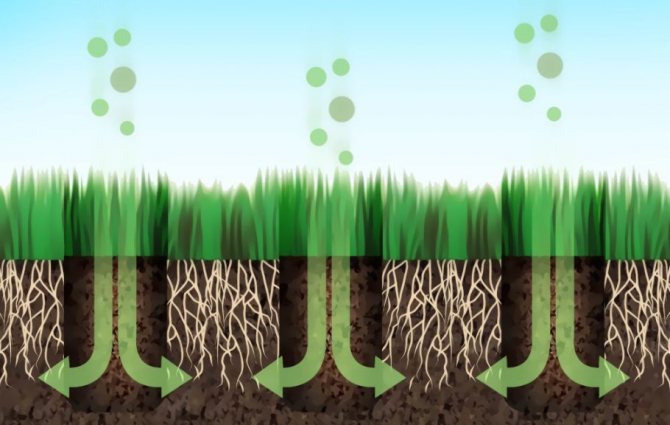

Aeration is carried out by piercing the soil. The procedure is performed once a year. If the lawn is intended for outdoor activities and has a heavy load, is subject to trampling, then the work is carried out at least two or three times a year.
You should start work if:
- the grass has a faded and lethargic appearance;
- yellowing spots are observed;
- the root system of plants is underdeveloped, has a length of no more than 5 cm;
- the sod is very dense and trampled.
Did you know? One of the most expensive turf courts in the world is the Wimbledon tennis court in England. The court is covered with a turf with grass grown on the only farm located in Yorkshire, and the technology of growing the cover is kept secret.
For aeration in small areas, an ordinary pitchfork is used, which pierce the soil to a depth of 10 cm.A good effect can also be achieved by using special shoes - aeration sandals, the sole of which is equipped with a variety of hollow knives. For large lawns use verticulators, equipped with an electric motor. Such units most effectively cope with the task at hand.


Before starting work, a couple of days before the planned aeration, you must moisten the lawn well. The turf should be moist, but without excess water. With the help of a verticulator, stripes should be drawn over the coating, making an overlap of 4–5 centimeters. If the soil is too dense, it is necessary to re-walk the machine. Making punctures a second time, you need to change the angle of movement, heading perpendicular to the already done strips. A few days later, when the sod dries well, you need to level and break the resulting seals with a rake, making the surface of the lawn smooth. In places where there are bald spots, it is recommended to sow the lawn mixture.
What fertilizers should be applied in the fall?
Don't know what fertilizer to apply in the fall? You can read more about this in the article: Fertilizers in the fall: what fertilizers to apply in the fall. Although there are many fertilizers available in stores, choose only those that have the word "autumn" in their name or are labeled for use in the fall. These fertilizers have the right composition to prepare the soil and grass for the coming winter.
Fall fertilizers contain very little or no nitrogen (N), because this element is responsible for rapid growth, which is completely unnecessary at this time of year. Before winter, the grass requires phosphorus (P) and potassium (K) - elements that are responsible for better distribution and increase resistance to low temperatures. However, if you have nitrogen fertilizer left over this season, you can keep it for another year because you will need it again in the spring.


Top dressing and fertilizers
The turf should be systematically fed, since the grasses that make up the mixture are fast-growing crops. Nutrients for growth and development accumulate in the stems and leaves of plants, but frequent haircuts significantly reduce their supply. The first application of mineral fertilizers is carried out seven days after laying the lawn. The main minerals required for the full development of the green linen are phosphorus, nitrogen and potassium.
Did you know? The first cylindrical lawn mower was invented in 1830 by Edwin Budding, a textile worker. The mechanism was a modified unit for trimming the edges of fabric rolls.
Phosphorus. Promotes the rapid development of the root system, which significantly increases the survival rate of the newly laid fabric. The introduction of phosphorus-containing compositions stimulates the active tillering of cereals. Also, the substance is responsible for the energy metabolism in plants, the accumulation of nutrients that help to successfully endure the cold season. Phosphorus is a part of complex mineral fertilizers, as well as simple and double superphosphates.
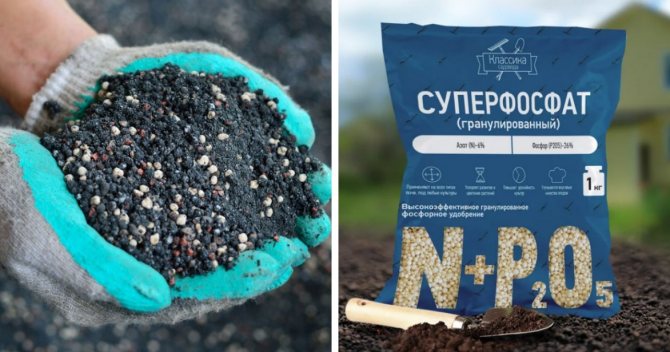

Potassium. Helps to develop a stable immunity against diseases, to overcome adverse weather conditions.
The substance is contained in the following preparations:
- potassium chloride;
- potassium salt;
- potassium sulfate;
- magnesium sulfate.
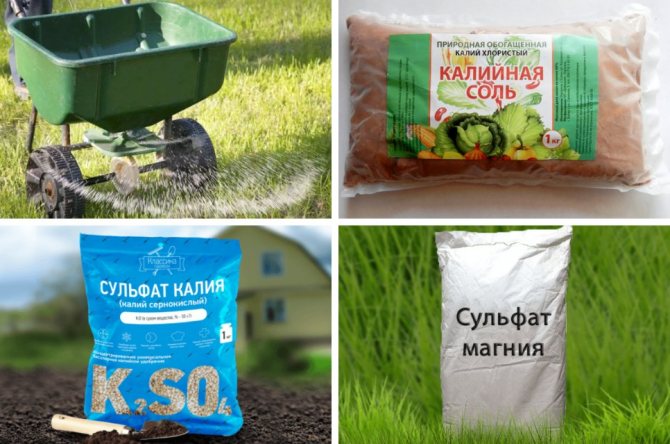

Nitrogen.
Responsible for the active development of green mass. Promotes active growth, makes the color more intense.
The highest nitrogen content in the following fertilizers:
- sodium nitrate;
- calcium nitrate;
- ammonium sulfate;
- ammonium chloride;
- ammonium nitrate;
- urea.
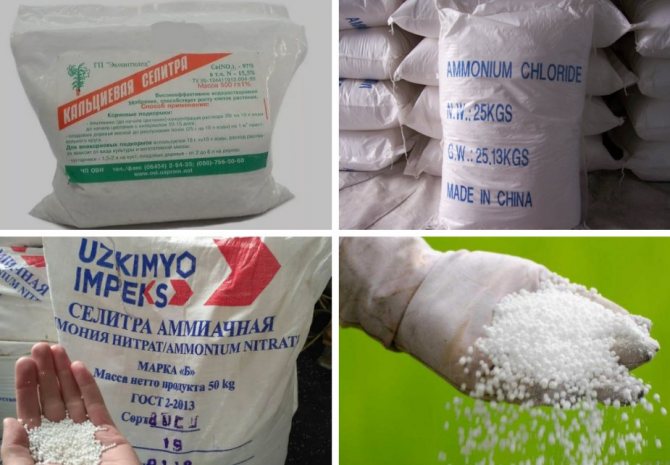

Spring feeding. As soon as a stable positive air temperature is established, and the snow cover has come off the canvas, you can start feeding. It is recommended to apply nitrogen fertilizers in the spring. The substance helps the grass cover to recover faster and contributes to its active renewal and growth. For a milder effect on plants weakened during the cold period, liquid preparations in a light chelated form should be chosen. This will significantly speed up the recovery of the green mass.


Fertilizer in the fall. Autumn feeding involves preparing the canvas for wintering. Fertilization is last applied at the end of October, before the first frost. In this period make complex phosphorus-potassium preparations with a small percentage of nitrogen.
This kind of care allows you to:
- make the stems of plants denser and more resistant to adverse weather factors;
- develop a stable immunity to many fungal and other diseases;
- prevent early aging and death of herbs;
- enrich plants with macro- and microelements at the beginning of the active spring period.
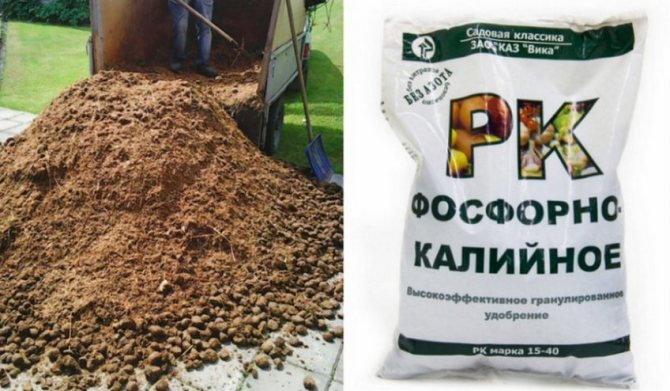

Summer dressing. Summer is a season of active growth and development of plants. It is desirable to use rich formulations that are balanced in nitrogen, phosphorus and potassium. Thanks to such fertilizing, the plant will harmoniously develop both a green ground mass and a strong root system.
Important! The introduction of mineral dressings requires the use of personal protective equipment in the form of a protective mask, gloves and special clothing.
Fertilization methods:
- dry - granules, which are applied with a special hand spreader. The substance is applied to the coating, passing the area in different directions, which contributes to a more even distribution of fertilizer over the entire area of the lawn. After that, abundant watering is carried out until the granules are completely dissolved. The undissolved substance can cause burns and significantly spoil the appearance of the canvas;
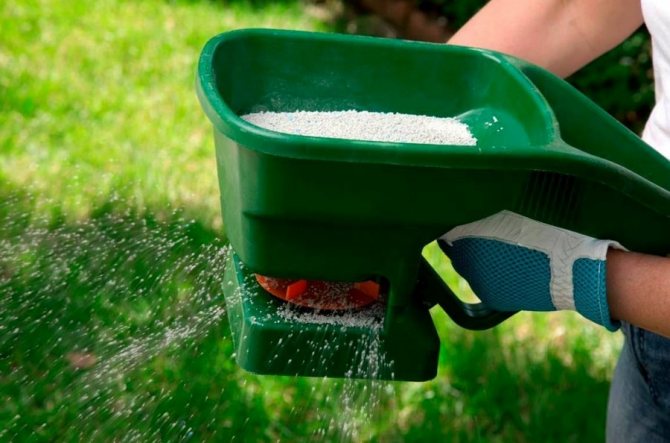

- preparations in liquid form are applied using a sprayer, spraying the preparation (diluted according to the instructions) on freshly cut grass. This type of feeding takes place by absorbing the drug by the green mass of the plant and does not require additional watering for at least a day.


Piercing the lawn
These procedures will be necessary if you did not do it in the spring or when the lawn is covered with a thick layer of moss. Mow the lawn first - to reduce the size of the grass. Then, aerate - you need to pierce the ground with a pitchfork or a special aerator to bring more air into the soil.
Tillage improves the structure of the soil directly under the sod - improves the penetration of water and fertilizers, increases its regenerative capacity, the soil is more resistant to trampling and creates a thick and leveled topography.
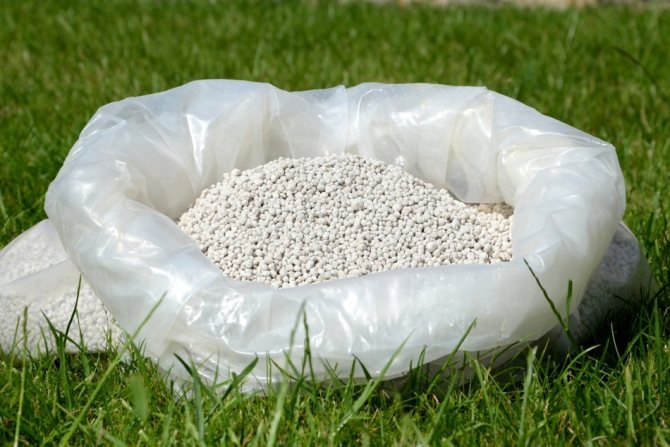

Scarification
Over time, the vegetation cover loses its attractiveness. Despite repeated cutting, feeding and combing with a rake, the remains of dead plants accumulate on the surface, making the lawn very unsightly. Scarification is a method of removing moss and straw from the lawn, thereby ensuring the flow of air and light to the lower parts of the plants.... Thanks to this care, the applied fertilizers are more efficiently distributed over the surface and reach the root system of cereals faster.
Scarification is recommended to be carried out no more than twice a year:
- in the fall, contributing to the formation of dense turf, increasing the density of the cover;
- in early spring, preventing moss growth and decay after a warm winter.


In order to correctly make scarification, it is necessary to make vertical cuts along a dense layer of turf... The best result can be achieved if the cuts are made alternately: one cut line along, the next across.
Preparing the lawn for the procedure includes several stages:
- mowing the lawn (the height of the grass should not exceed three centimeters);
- watering the canvas;
- thorough combing with a rake.
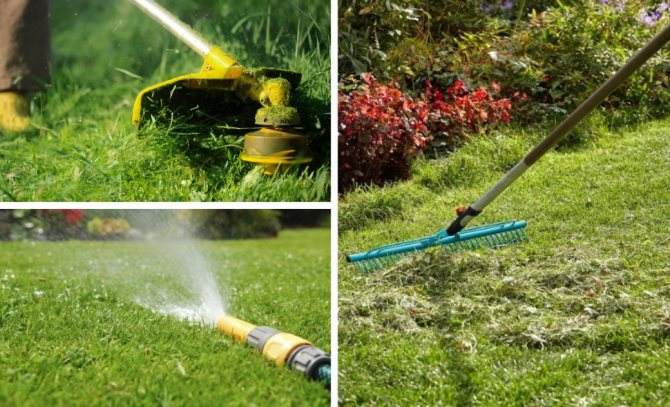

In order to carry out scarification, it is necessary to make longitudinal cuts on the grass bed along the compacted sod layer.
There are several types of devices that perfectly cope with the task:
- powerful gasoline units capable of processing large areas;
- electric for home use;
- homemade mechanical;
- shoe attachments.


An important criterion that determines the quality of work is the depth of the turf cut, which can be obtained by working with expensive gasoline and electrical appliances.
Is lime necessary: liming?
When the soil is acidic (pH below 5.5), the grass becomes weaker (the blades of grass are flabby, sparse and weak), and mosses and horsetails appear in their place. The optimum soil pH for lawns is 5.5-6.5. If the pH is above 7 (you need to check the oxygen level with a special tester), acidify the substrate with an acidic fertilizer (but this is very rare!). For pH testing, I use regular 3-in-1 water test strips: 3-in-1 water test strips (BestWay). With their help, I can test for free chlorine, pH, alkalinity. 50 strips per pack.
Deacidification is done to raise the pH of the soil, but only when necessary! Unnecessary liming can lead to weakening of the grass, weed growth and serious disease. Liming is done after the growing season, that is, at the beginning of the year, before the lawn begins to grow (February / March) or after the season (November / December), when the grass has completed its growth.
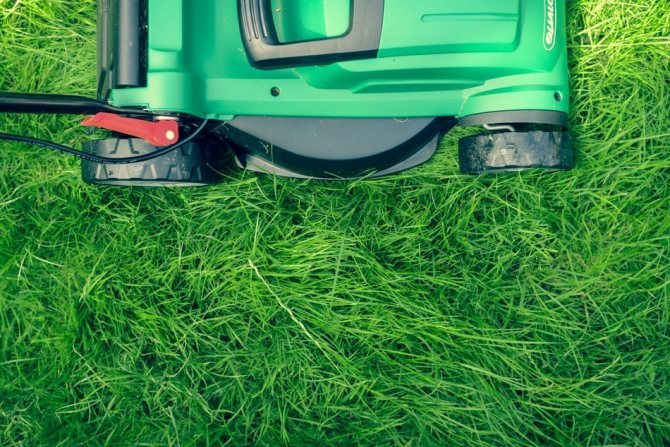

Lawn care in autumn, preparation for winter, roll lawn
Description
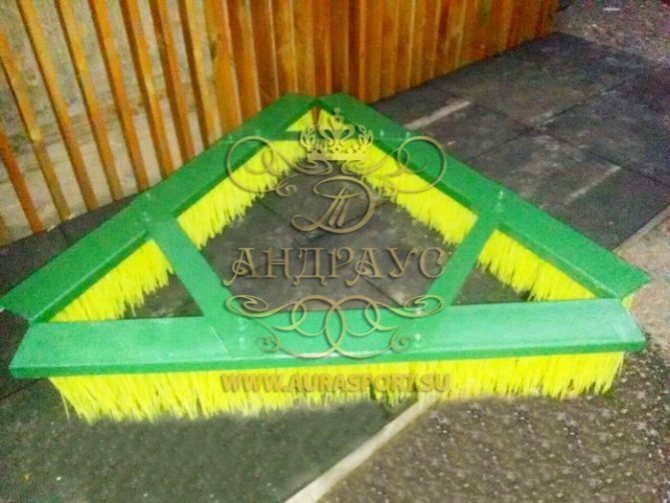

Artificial turf is quite popular today. Its advantages include an attractive appearance, resistance to influence from various atmospheric phenomena, and a long service life. To maintain the presentation, you need to provide high-quality and regular care in compliance with the basic recommendations. For this, special brushes for artificial grass are used, which help to clean and comb the artificial fibers with high quality. With the help of a simple device, you can level the fillers of different composition and properties, which are used when laying a synthetic coating.
https://youtu.be/xnQiXmAJpkg
Lawn Care: How Often To Mow Your Grass?
Autumn grass grows much more slowly than in spring, but it still needs to be mowed on a regular basis - depending on the type of lawn, once every 7-10 days. It should not be mowed in hot weather or when the grass is wet after rain. If the turf is wet and the soil is saturated with water, it is best to postpone mowing. Otherwise, you will ruin your lawn.
When the ground is dry, set the mower blade to the highest level and the grass gradually decreases the cutting height. Frequent mowing promotes grass growth. Last fall, I did my last lawn mowing in mid-October. Sometimes the procedure can be done a little later if the weather is warm and the grass is still growing.


Lawn care
Combing out


The next step is to remove plant debris from the lawn, such as leaves, cut and dried grass, branches, mulch laid in autumn, etc.
This layer prevents air and water from entering the soil. Also, pathogens of infectious diseases and insect pests feel good in it and actively reproduce.
Remove debris by sweeping the lawn with a fan rake... Unlike garden rakes, their teeth are located more often, therefore such rakes are more effective.
The section runs in two mutually perpendicular directions. Better yet, comb in 4 directions: along, across and diagonally.
The combing is carried out before the start of the growth of the grasses.
How to restore the lawn?
Right now in October, grass seeds are sprouting the fastest, so this is a great time to rebuild your lawn. You can use seeds that were purchased by you earlier, or by purchasing a special renewal / regeneration mixture. It consists of special species and varieties (usually ryegrad), characterized by rapid germination. Since grass seeds are expensive, I use seeds of Gavrish lawn grasses - type of crop: bent grass. To restore the lawn just right, cheap and high quality.
Remember that it is not enough to throw seeds in empty and prepared places, because they can be washed away by rain or birds will peck them. Before sowing, loosen the soil well and mix with new soil (if possible). Only then sow the seeds, and after sowing, cover them with a thin layer of soil and trample them down. Be aware that new pieces of turf (from a different seed mix than the one you planted your lawn) may differ in color and vigor from those you already have on your lawn.


Lawn care
Can I leave leaves on the grass?
The leaves on the lawn are a visible sign that autumn has finally arrived in our gardens. After a few days, the lawn transforms from a green carpet into a colorful mosaic. And while it looks pretty, it's not good for grass because fall leaves will rot and mold, causing an ugly discoloration of your lawn.
If such a lawn is covered with snow in winter, it can cause snow mold, a serious lawn disease. Leaves should be regularly collected or swept (as soon as they fall) so as not to interfere with the grass, "taking away" its sun - the grass is still growing in the fall! You can also walk on the lawn with a low mower and finely grind the leaves - or if there are a lot of them, collect the foliage in a basket to keep it from rotting on the lawn. The harvested leaves should be placed in compost, which will later create fertile deciduous soil.


Lawn care
Lawn diseases after winter
Unfavorable weather conditions can cause various diseases of the lawn, and it will take a lot of time and effort to care for and restore it. Therefore, it is so important to timely detect and carry out measures to prevent the spread of the disease. The following diseases can be dangerous for lawn grass:
- Snow mold or fusarium - looks like round, silvery spots. The grass looks like it is dusted with snow. After some time, the plants dry out, acquiring a straw shade. Getting rid of the disease is very difficult. The affected areas are cut and burned, and the soil is treated with fungicides.
- Rust. On the grass, pustules of a red-brown color are formed, which from a distance seem rusty. If you notice such spots, treat these places with a fungicide, and also mow the infected grass every day.
- Cortical disease or pink mosaic. Reddish or pinkish rounded spots appear on the grass. The onset of the disease can be prevented by providing proper care for the green lawn after winter. And if there are signs of the disease, it is necessary to treat the affected areas with a systemic fungicide.
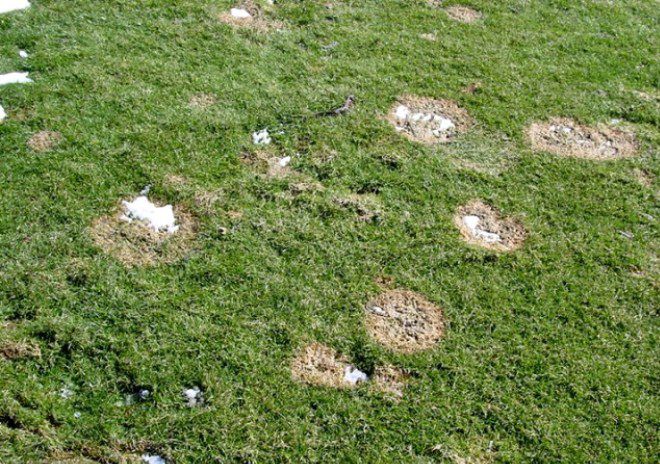

The lawn turned yellow after winter - what to do?
If you find yellow spots on your lawn after winter, there may be several reasons for this:
- Lack of nitrogen and iron in the soil. The situation can be corrected by the introduction of nitrogen fertilization.
- Insufficient watering, especially during hot periods.
- Consequences of cats or dogs visiting your lawn. The chemical composition of animal urine has a detrimental effect on all plants. Having found such yellow spots on the lawn grass, it is necessary to spill these places well with water or reseed the affected area.
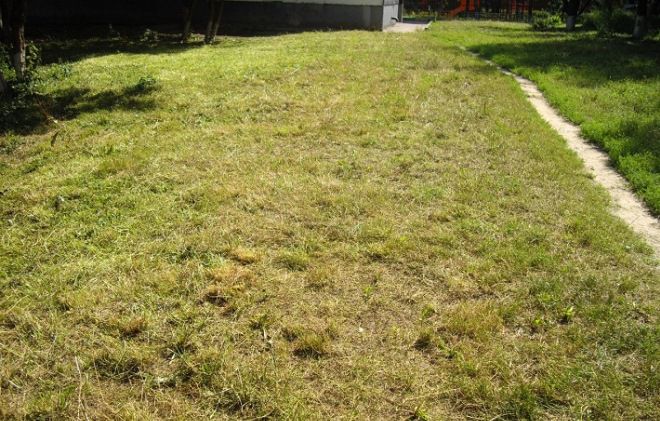

Fighting weeds on the lawn
Weeds on the lawn are evil, and even the onset of autumn does not cause a significant slowdown in their growth.If you haven't fought them yet, you need to do it now, because they can spread, and next season will be a big problem. Special herbicides are used - that is, dicotyledonous herbicides that fight the most resistant weeds (for example, dandelion, clover, chamomile) and are safe for turf.
If your lawn is close to a vegetable garden, you need to remove the weeds by hand, dig them up along with the roots so that they do not grow. Don't throw them on compost because they can survive even in winter. You can burn them, put them in a bucket of water to rot, or "bury" them to keep them from scattering. Mow your lawn regularly because mowing your lawn weakens the weeds and strengthens the grass.
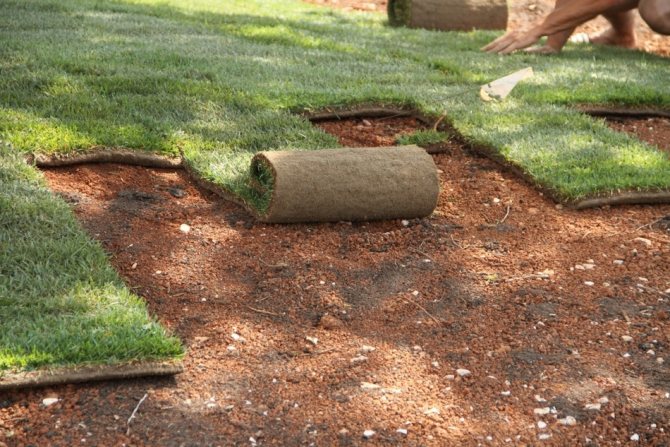

Lawn care
How to restore a dried lawn?
If your lawn was hit during the summer heat, and instead of a green carpet, it looks like a "golden tundra", you shouldn't wonder what to do with it now. Let's get to work. Before you start watering your lawn, you must first remove any dry grass. If the turf is very compact, it is recommended that you buy a scraper to help you pick up the blades of grass.
The next step will be precise and abundant watering of the grass, so that the water reaches the deeper layers of the earth, it must be pierced with a pitchfork. Watering should be repeated for several days in a row. After this regeneration, the turf should turn green in a few weeks. Only then can fertilizers be used (only in autumn, because nitrogen will cause excessive rapid growth!). Nitrogen fertilizers are applied in the spring to energize the grass to grow.
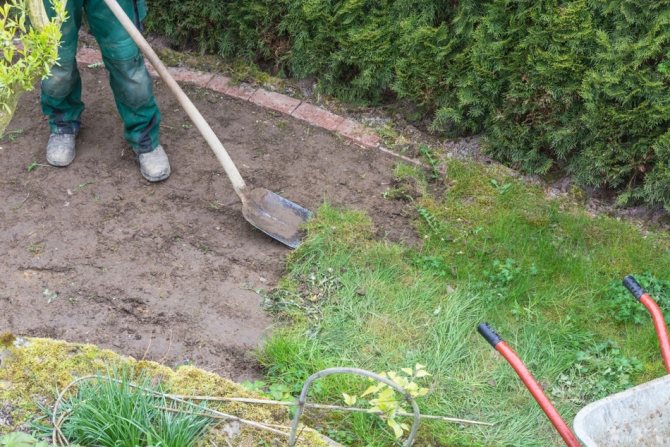

Lawn care
What needs to be done in the fall?
In order for the lawn to endure the cold with the least damage, it is advisable to prepare it appropriately from the fall. A complex fertilizer with a high potassium content, which has a long-term effect, will help in this. Combined with aeration, it stimulates the growth of the root system, thereby increasing the winter hardiness of the grass carpet. For central Russia, it is advisable to carry out these works on dry, calm days in the second half of October.
From the soil, it is necessary to remove with a rake infected with fungus or rotten grass cuttings and fallen leaves. Before the onset of cold weather, you should not mow the lawn very shortly. Very short or too tall grass equally does not tolerate wintering under the snow. The best option is a couple of centimeters higher than usual.
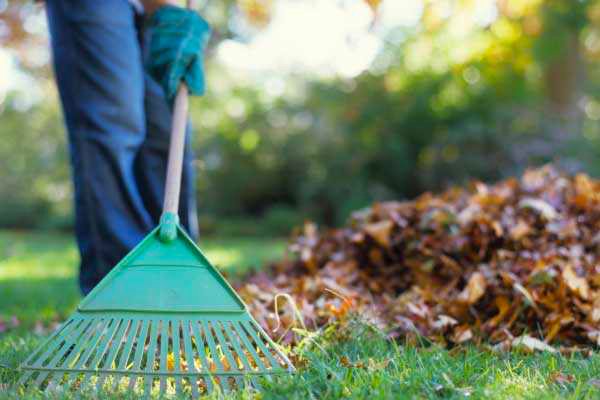

Rolled lawn care: can I plant a rolling lawn in the fall?
Autumn is the perfect time to lay a roll lawn. If you have prepared the soil well, the turf will quickly take root in its new location. Rolls are best put in one day - they do not need to be stored (which can cause them to dry and fall off). The soil should be moist and should be moistened before starting work.
The rolled lawn is laid parallel to each other (the connection in adjacent rows should not be in the same line) strictly, one at a time, but not overlapping. In addition, the stalks of the grass must be oriented in the same direction, otherwise the lawn will not look uniform. Once laid out, level and water liberally.
Watering
The most important procedure for a roll lawn is watering, and a newly laid lawn needs it immediately. If the area of the lawn is large, then you need to start watering at the same time as laying, otherwise the grass will wither and adapt longer. This is the most dangerous watch for a finished roll coating.
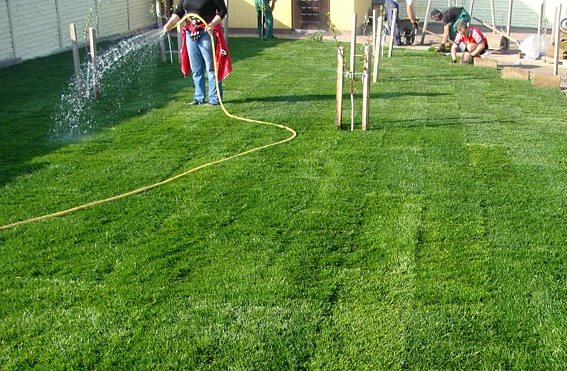

If it is possible to set up automatic spraying of water, then this must be done, since a jet beating from a hose can damage the coating or move it at the joints. Neither drying out nor the appearance of puddles on the surface of the lawn should be allowed. The laid out rolls are immediately spilled with water in such a way that the earth gets wet under the sod.
The first week you need to water every day in the early morning or evening, pouring at least 25 liters of water per 1 m2 per day.By the end of the week, small roots can be seen on the back of the cover. In the second week, watering is carried out every other day, then as needed, depending on how moist the soil is. This usually happens 2-3 times a week or even once.
Rolled lawn care: how to replace a new lawn with an old one?
If you are creating a new lawn in an old location, you must remove all of the old turf first! It is very labor intensive, but it is the only way to clear the soil.
If you leave the existing grass and weeds, they will quickly grow into a new layer and destroy the new lawn. Remove the sod with a shovel, prying apart each piece of sod. Don't dig all the sod at once, do it gradually. It is better to remove the top layer with the old substrate and replace it with a new and fertile one, on which the new turf will quickly acquire an intense color of lush and green grass.


Lawn care, fighting moles
Advantages of a special tool
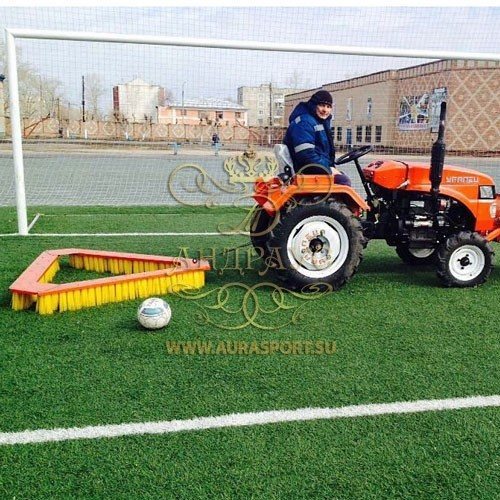

This tool has been widely used, since in practice it demonstrates many advantages:
- provides the highest quality cleaning of artificial bristles, since the brush penetrates deeply into the coating;
- long period of operation;
- convenience and ease of use. This is due to the low weight of the equipment. Therefore, to carry out the work, you do not need to involve a whole team of specialists;
- high performance indicators.
How to scare off pests, save the lawn?
In autumn, the activity of moles increases, which can be seen with the naked eye. The mole makes the last harvest before winter and looks for tasty roots in the garden. The appearance of moles on the lawn quickly spoils its aesthetics and mobilizes the owners of the site to fight pests.
The best method for dealing with moles is to place a lawn mesh - however, this should only be done before installing a new lawn.
To scare away moles from an already installed lawn, you need to use a vibrating electro-acoustic device, which is inaudible to the human ear, but unpleasant for the mole. One of such devices is the "Antikrot" electronic ultrasonic rodent repeller. It is not expensive, in the region of 850 rubles, but the benefits are tangible. I do not recommend using special poisonous or chemical agents.

